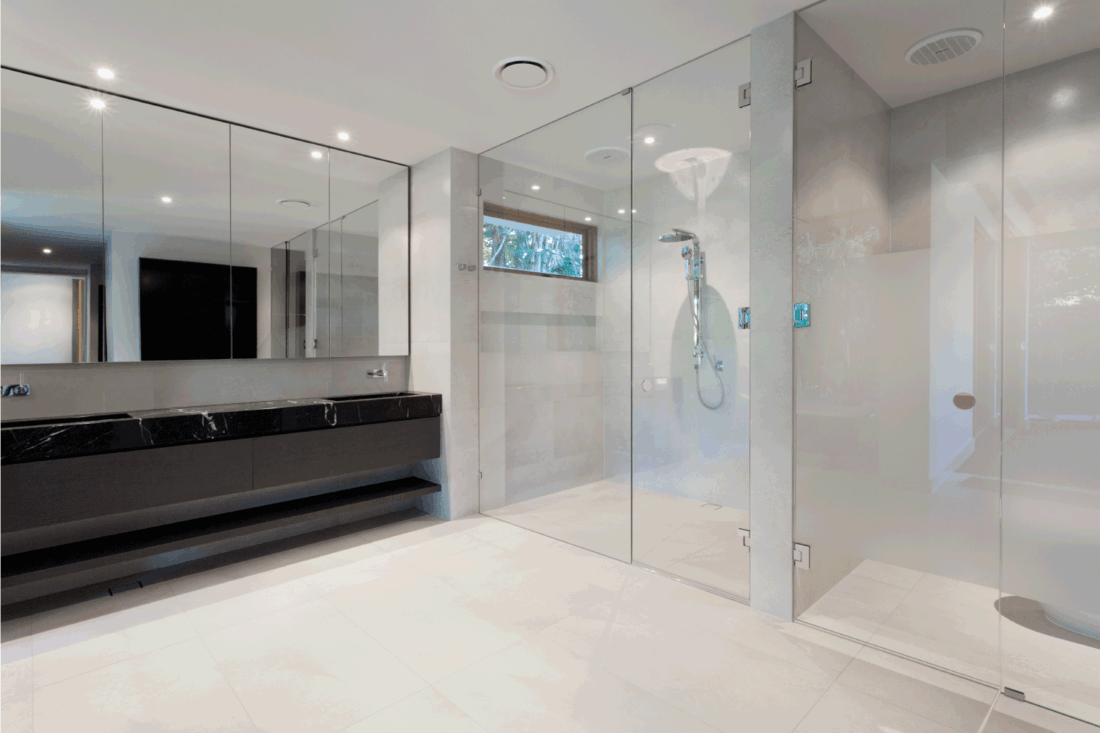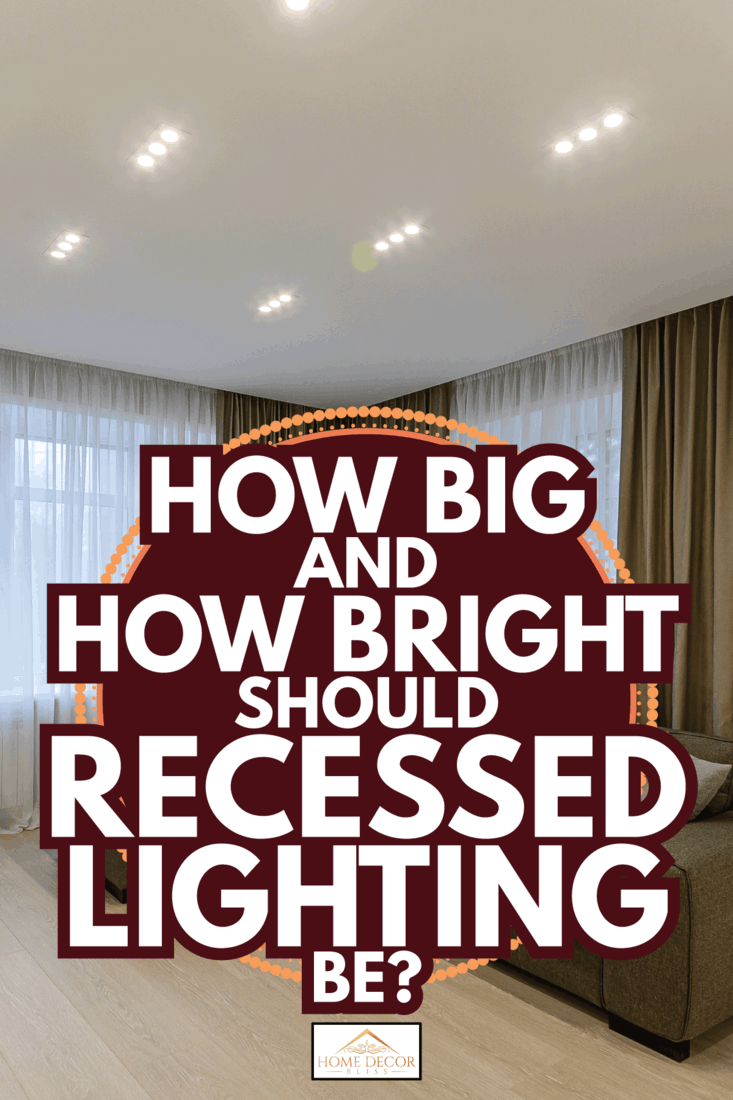What Size Recessed Lights For Bedroom
Also known as can lights, recessed lighting has been around for years and isn't going anywhere. You may already have some in your home or maybe you're looking to add a few during a home renovation to free up headspace. With such a permanent installation, you're going to want to know what size and brightness are right for the room. We've done the hard part of researching to bring you an answer!
Each room in your home has its own lighting needs. A great part of recessed lighting is that you can mix and match sizes, so it's okay having one room change to the next. Let's take a look based on the room:
Kitchen
- 4-inch to 5-inch housings
- Bright white temperature, 4000k-5000k
- 7,000 to 8,000 lumens (work area over the counter)
- 3,000 to 4,000 lumens (rest of the room)
Bathroom
- 3-inch to 5-inch housings
- Soft white temperature, 3500k-4000k
- Must be wet-rated for damp areas
- 7,000 to 8,000 lumens
Bedroom
- 4-inch to 6-inch housings
- Warm white, 2200k-2700k
- Soft warm white, 3000k
- 1,000 to 2,000 lumens
Living room
- 4-inch to 7-inch housings
- Warm white, 2200k-2700k
- 1,000 to 2,000 lumens
Dining room or Foyer
- 4-inch to 5-inch housings
- Soft white temperature, 3500k-4000k
- 3,000 to 4,000 lumens
In this article, we'll be doing an in-depth look into multiple lighting options, plus more! So, be sure to keep reading.
Recessed Light Size and Brightness
Based on the Florida Home Energy website, the Kelvin color temperature scale is broken down to see the warmth or coolness of each light. Lumens, size, and types of housings will vary greatly by room size and feel.
In most settings, other than task lighting, put your lights up to 3 feet away from the wall to avoid harsh shadows on the wall. For task lightings, such as over a workbench or desk, you can place the lights directly above the table to see what you are doing. Lights that are put directly overhead in a working space will cast your shadow directly over what you're looking at.
Not only do you need to think about the recessed lights' housing size and brightness, but you'll also want to remember how many you'll need to install. There are a few ways to go about it. One, place lights 3-5 feet apart. Two, take the length times the width of the room to get your square footage. Next, multiply the square footage by 1.5. You'll divide the final number by the wattage of light bulbs of the room to find out how many you'll need for even lighting.
Tip: Rooms with taller ceilings are going to need more lights or reflective trims for the light to reach down.
Lighting calculators
A very handy tool to know about: lighting calculators! These automatic calculators take your room's square footage and tell you how many light fixtures you'll need. You can also check out this calculator that gives you recommendations based on the layout of lights. In addition to lighting calculators, you can also figure out the rest of your home's voltage ranges to be up to date on the rest of your home's electrical system.
Kitchen
The kitchen is going to be one of the brightest rooms in your home. Ceiling lights should be put at least 3 feet away from the cabinets and then placed as spotlights underneath the cabinets for task lighting. Typically 4-inch to 6-inch housings will be placed in the kitchen for the wide wash. However, smaller housings can be used for tighter spaces. You'll want the lumens and temperature bright to see what you're doing.
To find out how many lights you need, find the square footage and either put it in a formula or use a lighting calculator. For the formula option, you'll be basing it on the wattage of the bulbs. Or, you can take advantage of lighting calculators that take your measurements and tell you.
For example, an 18'x20′ room is 360sq ft; divide it by 1.5 and you end up with 240. If you want to use 40-watt bulbs, divide 240 by that, which will be 6. You'll need six 2-inch to 3-inch lights to properly light the room. Of course, you can always lessen that by putting three 6-inch recessed lights with 80-watt bulbs.

Click here to view these daylight bulbs on Amazon.
Bathroom
This is the second brightest room in your home. The brighter the bathroom, the airier it looks. For placement of the fixtures, keep them over the sink to keep dark shadows off your face, two 4-inch lights set apart will fair well here. You can also add one 5-inch one above the tub or shower area.
Whenever you're adding housing and trims to the bathroom, make sure they are wet-rated and approved for damp areas.
Living room
A hot spot of the home, the living room lighting really sets the mood. Living rooms really come down to preference and the size of the room. Taller and sloped ceilings are going to require larger lights, such as 6-inch to 7-inch or multiple 4-inch to 5-inch.
There are also different trim options available such as adjustable, gimbal, and reflector trims. Another great option would be to add a dimmer to the lights for mood settings throughout the day.

Click here to view this gimbal trim on Amazon.
Dining Room or Foyer
For rooms with detailed moldings, such as the dining room or foyer, recessed lighting may not be the best choice. Since can lights point downward, the details can get lost in the shadows created. A hanging light or chandelier would be a better fit for these areas.
Gallery wall/art
Larger walls or corners are perfect spots for art. So why not highlight them to show off? For gallery walls, use a wall wash trim on your recessed lighting fixtures. Wash trims have a wide range of movement and can be directed if need be.
For artwork in corners, you can use either a wash trim or an adjustable trim. Using an adjustable trim will allow you to place the light a little further away to cut down on shadows. However, if you're looking for a dramatic effect, place the light directly over the artwork.
How to measure recessed lighting size
As you look at housings and trims in the store or online, know that the housing size is the true measurement of the hole in the ceiling. If you have a 6-inch recessed lighting house, the diameter of the fixture is 6ninches and does not include the trim. Since you have a selection of trims, the final size will be different than just the housing size.
Check out this detailed guide below:
3-inch vs 4-inch recessed lighting
3-inch lights are smaller than the standard 4-inch light. A smaller desk area or even a built-in with a lower ceiling could fare well with a 3-inch light. 3-inch lights are not meant to light very big areas since you'd need a lot of them and it can start to look busy.
4-inch lights are the preferred starting point for recessed lighting. These fixtures are versatile enough to be general lighting in smaller spaces, as well as in the kitchen and the bathroom. Based on a homeowners forum, it would not be recommended to use 4-inch lights on any ceilings greater than 8-9 feet.
Tip: You can add in a few 3-inch recessed lights to rooms with pendant lights for extra overall light coverage.
4-inch vs 6-inch recessed lighting
4-inch lights are great for more cozy-sized rooms and accent lights. 6-inch lights will become necessary when you move into larger areas such as a living room, basement, or oversized bedroom. Using 6-inch recessed lights means cutting down on the amount needed for the same coverage, as well as great for taller ceilings.
Pros and cons of bigger and brighter lights
Pros
- More coverage
- Makes a statement
- Only need a few lights
- Energy-efficient options
- LED options
- Great for tall and sloped ceilings
Cons
- Cost of large install
- Too bright without a dimmer
- Could end up like a spotlight without a proper trim
- Compatibility issues with smart lights
- LEDs need to be completely replaced if one burns out
- Could require an electrician
Should you have 4 or 6 recessed lights in the bathroom?

The size fixture for a bathroom depends on the overall square footage of the room, as well as if there is any natural light. Bathrooms with a window in the shower area most likely won't need one overhead. One of the benefits of recessed lighting is that as long as the style is consistent, you can mix sizes in the same room.
Let's say your counter is the star of the room and is very long. You'll want to have 4-inch lights placed throughout the length. And then you can place a 6-inch light in an open shower, or another 4-inch fixture. 6-inch lights are great for half baths as they have the power to lighten up corners. No matter what size you go with, the lights have to be wet area approved!
What is adjustable color LED recessed lighting?
According to the Energy Stars website, LED lights are directional lights that give off better lighting while cutting down on electricity. As technology advances, there are now smart lights available that can give you the option to control the color of the light from an app. Take mood lighting to a whole new level by making the lights turn purple or green from one touch!

Check out these lights on Amazon.
All in all
Residential recessed lighting houses typically range from 4 inches to 7 inches. How many and what size you'll need will be based on room size and ceiling height, but you can use a lighting calculator to help figure out what works best for you. The sizes of lights are commonly mixed together, you'll just want to try and keep the trim style consistent.
You may also like the following related posts:
11 Fantastic Recessed Lighting Ideas For Kitchen
How Hard Is It To Install Recessed Lighting?
What Size Recessed Lights For Bedroom
Source: https://homedecorbliss.com/how-big-and-how-bright-should-recessed-lighting-be/


0 Komentar